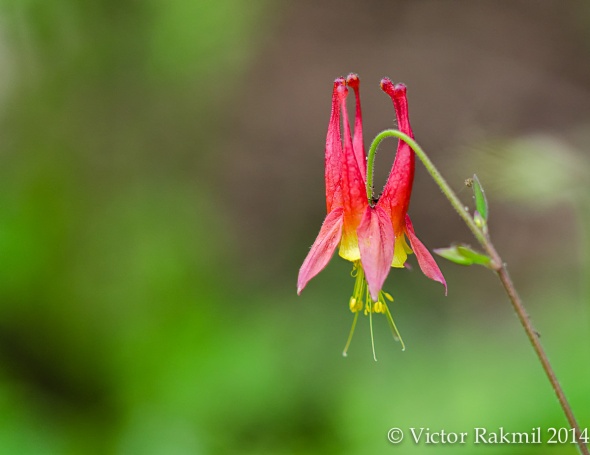Depth of Field (and three photographs – including baby ducks!)
 To view more of my photography please click on www.rakmilphotography.com
To view more of my photography please click on www.rakmilphotography.com
Depth of Field at its simplest is: the larger the aperture (smaller Fstop e.g. F2.8) the narrower the depth of field and the smaller the aperture (larger Fstop e.g. F16) the deeper the depth of field.
At any depth of the field, one-third of the depth of field extends in front of the point of focus and two-thirds behind the focal point.
At extremes of depths of field (above F11 e.g F16) you can experience diffraction which simply means things you think would be in focus are soft; this happens in landscape photography because of the distance the light needs to travel. There is a debate over hyperfocal distance; where you shoot at a specific focal length with small aperture and everything from a few feet out to infinity appears to be in focus. There are a lot of calculators on-line and in apps to measure hyperfocal distance. However, using a small aperture and focusing one-third of the way into your scene will work most of the time. The debate arises because of complex math behind the calculations and the effectiveness of hyperfocal distance, even perfectly calculated, to work all the time.
The focal length of the lens makes little difference to depth of field. However, when we shoot very close up the depth of field we would expect from a given Fstop is decreased dramatically.
Similarly when we shoot things at significant distance, a shallow depth of field is larger than for things closer up. So if you look at the photo above taken at f3.5 with a macro lens not everything is in focus. However look at the second (un-retouched photo) and third (final product) shots below (a preview of a series on Common Mergansers) taken with a 70-200mm at F4.5 we get a surprisingly good depth of field. Shooting at a narrower depth of field helps keep the ISO down and your speed up (speed and ISO are almost always the cost of a larger Fstop). There are a number of depth of field calculators on-line that will give you an idea of the results with a specific camera and lens at different distances and fstops.
It is also interesting to note that the smaller the sensor the larger the depth of field at any given fstop compared to a larger sensor camera.
Depth of field can get enormously complex with calculations of “circles of confusion” impacts on chromatic aberration, etc. Thinking through the facts above has helped me in my photography but it always seems a little counter-intuitive.
One caveat is that the two final photos were taken with a 24 megapixel camera, which therefore allows for more resolution when cropping.



I love your blog. You put things so simply and yet give so much information! Thank you! Wonderful shots by the way. 🙂
LikeLike
July 2, 2014 at 6:50 pm
Thanks. Much appreciated. I hope to do much more.
LikeLike
July 3, 2014 at 5:34 am
You’re welcome! Looking forward to it.
LikeLike
July 3, 2014 at 10:18 am
Love this!
LikeLike
July 2, 2014 at 7:43 am
Thank you!
LikeLike
July 2, 2014 at 8:12 am
Good explanation of depth of field and wonderful images to illustrate your points. Depth of field is usually at the list of considerations when I am shooting, which is why I tend to shoot in aperture priority most of the time.
LikeLike
July 2, 2014 at 7:24 am
I should write about camera modes. I mainly use Aperture as well but not exclusively.
LikeLike
July 2, 2014 at 8:11 am
Beautiful shot & bokah!
LikeLike
July 2, 2014 at 6:45 am
Thanks. Glad to hear you like it!
LikeLike
July 2, 2014 at 8:11 am
Victor you say ‘At extremes of depths of field (above F11) you can experience diffraction’. Do you mean between f2.8 and f11 or from f11 to f32 for example. I suspect you mean the latter?
LikeLike
July 2, 2014 at 6:09 am
Corrected. E.G. F16
LikeLike
July 2, 2014 at 7:13 am